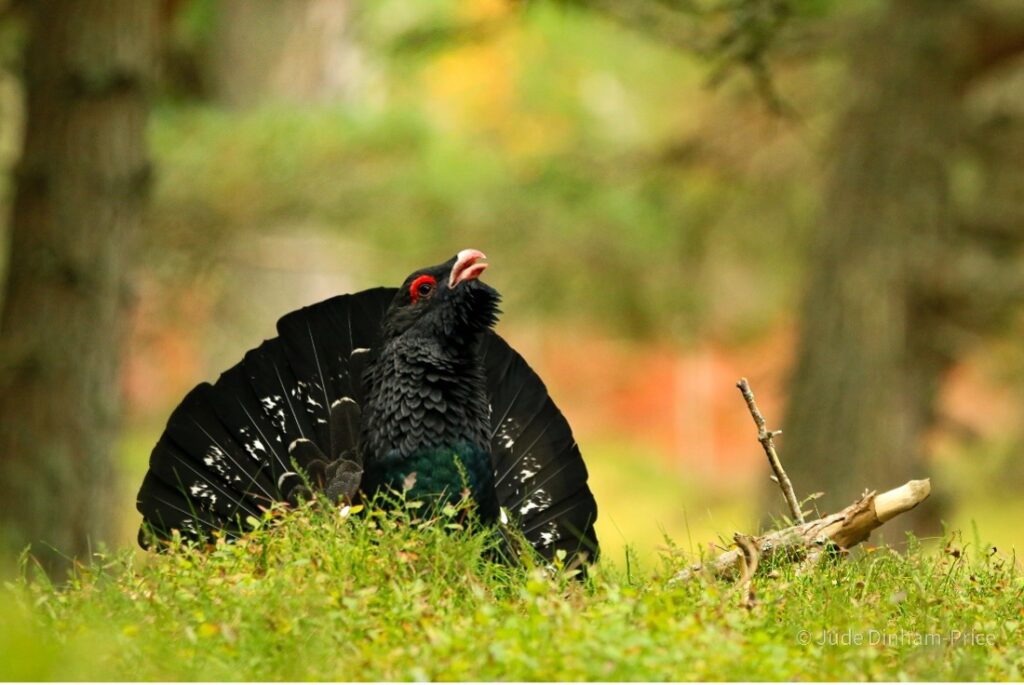
By Jude Dingham-Price, former GWCT Scottish Demonstration Farm Placement Student
The capercaillie (Tetrao urogallus) is a truly magnificent species, one that almost seems too significant and primeval to occur in the small remaining pockets of Caledonian pine forests in the 21st century. The small, declining population of this species is now centred in Strathspey, with fewer individuals occurring in Deeside and Easter Ross. This, sadly, makes observing capercaillie particularly rare in Scotland.
I, however, was gifted the chance by the Game & Wildlife Conservation Trust to spend part of my short placement working within the stronghold of this reclusive animal. The work took place within the stunning and nationally important native pine forests owned by Seafield and Strathspey estates, part of a tract of Caledonian pinewoods in the Strathspey area.
These forests comprise of a primary Scots pine canopy, with an intermingling deciduous understory of rowan or birch and a rich, structurally diverse forest floor being blanketed with dwarf shrubs, most notably the Ericaceae family. Consequently, this gives rise to a nationally scarce assemblage of vertebrates and invertebrates, with species like crested tits, capercaillie, lichen-running spiders and narrow headed ants being almost solely reliant on this sparse habitat in Scotland.
Here I assisted Dr Kathy Fletcher on capercaillie habitat assessments. The work consisted of surveying the community and structure of plant life on the woodland floor, whereby the species, heights and percentage cover of flora is recorded alongside information on the canopy cover and tree dimensions at the site of a capercaillie flush point. A flush point is where a bird has been flushed during the late summer brood counts using pointing dogs undertaken under licence through suitable capercaillie habitat. The transects often contour the slopes due to the tendency of capercaillie to fly more readily downhill, which makes sense for a flying bird weighing up to 7kg!
This natural response ensures that there are fewer repeat sightings in the survey. Such surveys are used to get an estimate for the breeding success of the capercaillie in the forest, with the focus on females and their brood size if they have bred, however male birds are also recorded if flushed. My time spent in suitable Capercaillie habitat yielded many a memorable sighting of these reclusive woodland grouse flying through the large granny pines, with nine being seen at once, flushed from a traditional communal roost.
However, the most unusual of sightings was when we encountered a troublesome, recently relocated ‘rogue’ male, which had lost all fear of humans and especially vehicles. This phenomenon is widely documented in capercaillie behaviour and may only occur in some 1 in 1,000 males. The male was seen for about a month and offered an incredible wildlife experience for those fortunate to pass his parade ground. He later disappeared, with it hoped that he has returned to his ‘normal’ behaviour, possibly brought on with the change in temperature and/or day length.
